Starting your journey to grow plants from seeds indoors can be both exciting and deeply satisfying. Whether you wish to cultivate fresh Indoor Plants Seeds herbs for your kitchen, introduce vibrant flowers into your home décor, or grow vegetables right on your table, this process is an economical and rewarding way to bring nature inside. Beyond saving money, building an indoor garden offers a fulfilling and enriching experience that fills your space with life.
To succeed, it is essential to select the right variety of seeds for indoor cultivation. Certain plants, such as basil, mint, and cherry tomatoes, are particularly well-suited for indoor growth .Indoor Plants Seeds By applying the proper techniques, including using high-quality soil, maintaining the correct temperature, and ensuring ample light, your seedlings will grow strong and healthy. An important aspect of their care is providing consistent moisture without overwatering, as a well-balanced approach helps young seedlings thrive.
As your plants continue to grow, it’s crucial to understand transplanting—some seedlings will require larger pots, while others can eventually be moved outdoors when they mature. Indoor Plants Seeds This comprehensive guide will provide step-by-step instructions, tips, and insights to ensure your indoor garden flourishes. With the right amount of patience and care, you can enjoy a lush, green space that enhances your home with natural beauty.
Why Grow Indoor Plants from Seeds?
Growing plants from seeds is not just a wonderful experience but also an extremely cost-effective approach. Instead of purchasing fully grown mature plants from a nursery, which can be quite expensive ,Indoor Plants Seeds starting with seeds is significantly cheaper and allows you to explore a diverse range of varieties. You also gain access to unique and heirloom options that might not be available at your local store.
A major advantage of starting from seeds is the ability to control every stage of their development. You can ensure that your plants remain healthy, are grown in a safe environment, and remain disease-free. Unlike store-bought alternatives, home-grown plants tend to be stronger and better adapted to your space, making them more likely to thrive.
Beyond these practical benefits, watching a tiny sprout emerge and develop into a flourishing plant is incredibly rewarding. The process is fulfilling, and the satisfaction of nurturing life from day one is unmatched. If you’re not yet convinced, just imagine the joy of witnessing the steady transformation of a seed into a fully grown plant—a sight that never fails to amaze once you’ve started.
Step 1: Choosing the Right Seeds
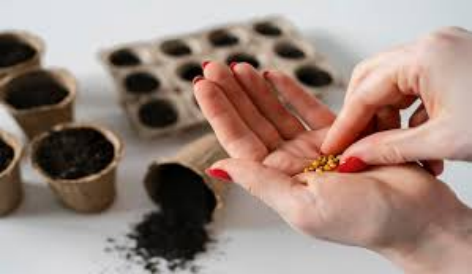
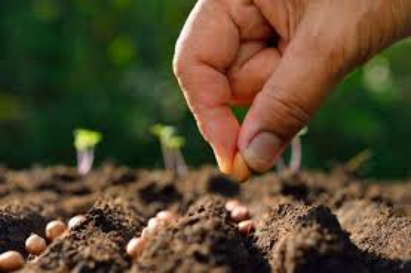
For a successful indoor garden, selecting the right seeds is the first crucial step. If you have limited space in your home, consider herbs such as basil, mint, thyme, oregano, chives, and parsley, as they thrive with minimal maintenance.
If you’re looking to introduce beauty and color to your indoor space, opt for flowers like marigolds, petunias, pansies, cosmos, and nasturtiums. These flowers are easy to maintain and bring a fresh, lively atmosphere to any room.
For those interested in vegetables, crops such as tomatoes, peppers, lettuce, kale, and spinach can be successfully grown inside using containers. These vegetables require moderate sunlight and proper care, but they can be a great addition to your homegrown produce.
Step 2: What to Look for When Buying Seeds
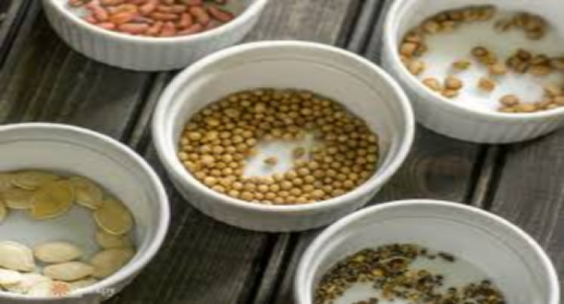
When purchasing seeds, it’s important to check the seed packet for key information, including germination time, ideal growing conditions, and the expected plant size. Some plants flourish in warm environments, while others prefer cooler settings.
For healthy seedlings, always choose organic and non-GMO seeds, as they are free from chemicals and genetic modifications. Additionally, choosing high-germination rates will increase the likelihood of success, ensuring your plants grow strong and healthy.
Step 3: Planting the Seeds
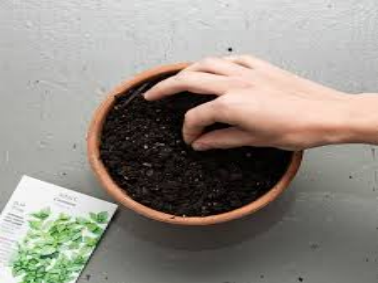
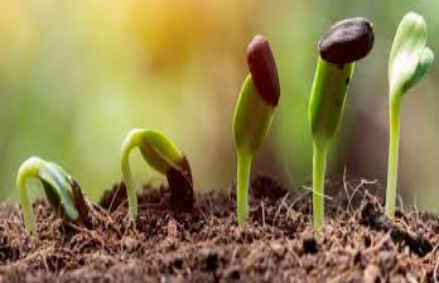
For optimal results, use a moistened seed-starting mix that ensures even moisture distribution in your containers. This mix is lightweight and helps the seeds develop efficiently.
- Fill your pots or containers, leaving about a quarter-inch of space at the top.
- Plant the seeds according to the depth suggested on the seed packet—a general rule is to plant twice the diameter of the seed.
- Lettuce seeds, for example, need light to germinate, so they should remain uncovered.
To maintain moisture, use a spray bottle with a misting nozzle and avoid overwatering. Covering your pots with plastic wrap helps create a greenhouse effect, which locks in humidity and speeds up germination.
Step 4: Creating the Right Growing Conditions
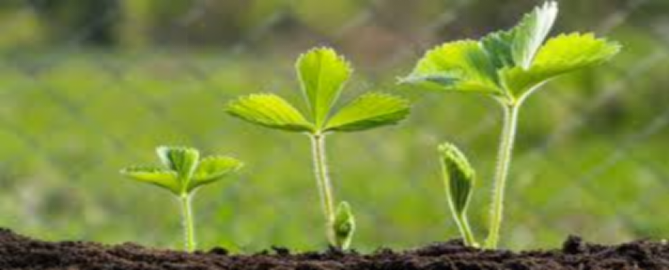
For seeds to germinate, the ideal temperature range is 65-75°F (18-24°C). If your home is on the cooler side, a heat mat can help provide consistent warmth.
To prevent fungal diseases, maintain balanced humidity and moisture levels. The soil should remain moist, but avoid making it too soggy, as overwatering can harm your seedlings.
Proper light is also essential. Seedlings need 12-16 hours of light each day to develop strong stems. If natural sunlight is insufficient, consider using grow lights placed 4-6 inches above the plants. Adjust these as the plants grow.
Step 5: Caring for Your Seedlings
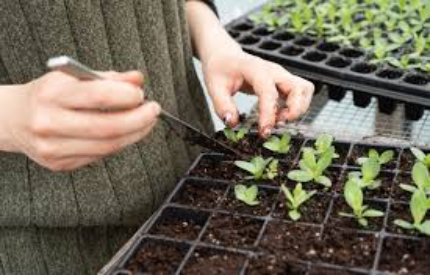
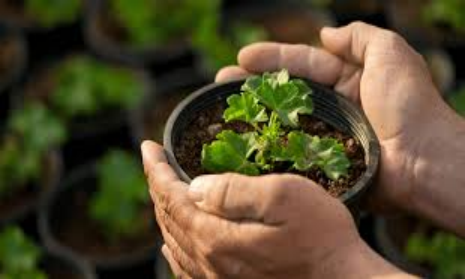
Once seedlings sprout, they need consistent care:
- Keep the soil surface from becoming too dry.
- Use a shallow dish to water from the bottom, allowing moisture to be absorbed gradually.
- Snip the weakest seedlings at the base so the strongest plants can thrive.
If your seedlings appear leggy, they might need more light. Also, start fertilizing them after a few weeks with a diluted liquid fertilizer to provide essential nutrients.
Step 6: Transplanting into Larger Pots
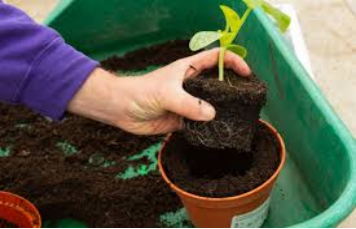

Once true leaves appear, it’s time to move your seedlings into larger pots.
- Prepare a potting mix with proper drainage.
- Dig a hole for the root ball and gently remove the plant from its original container.
- Plant it at the right depth and water thoroughly.
- Keep it in a sunny window or under grow lights to encourage further growth.
Step 7: Hardening Off & Moving Outdoors (Optional)
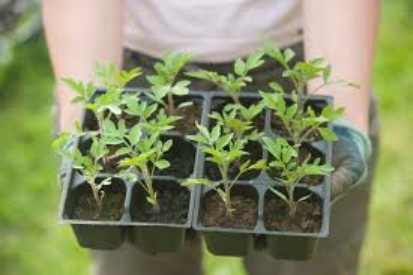
If you plan to move your plants outdoors, a process called hardening off is essential. This helps your seedlings adjust to their new environment, preventing transplant shock.
- Start by placing your seedlings in a shaded area for a few hours daily.
- Gradually increase their exposure to sunlight over a week.
- Choose an overcast day for their first full day outside to reduce stress.
Once adjusted, they can be permanently placed outdoors without shock.
Final Thoughts
Growing indoor plants from seeds is a rewarding experience that transforms your home into a lush green space. Whether you are experimenting with varieties or simply saving money, the patience, attention, and care you invest will result in strong, vibrant seedlings.
With the right approach, your garden will thrive, bringing beauty, fresh herbs, and homegrown vegetables to your space. Planting and nurturing seeds is a journey filled with discovery, and the results make it all worthwhile.

Pingback: How to Fix Low Water Pressure in Your Home - choosewise.info